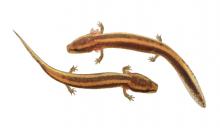Save the frogs
- Read more about Save the frogs
- Log in to post comments
Frogs are one of the oldest vertebrates on this planet. They have survived four mass extinctions, but currently they face rapid decline mostly due to habitat loss, pollution, pesticide use, over harvesting for food, collection for dissection and experimentation, disease, shrinking water sources, lack of conservation awareness and so forth. This has caused the extinction of hundreds of species worldwide.










